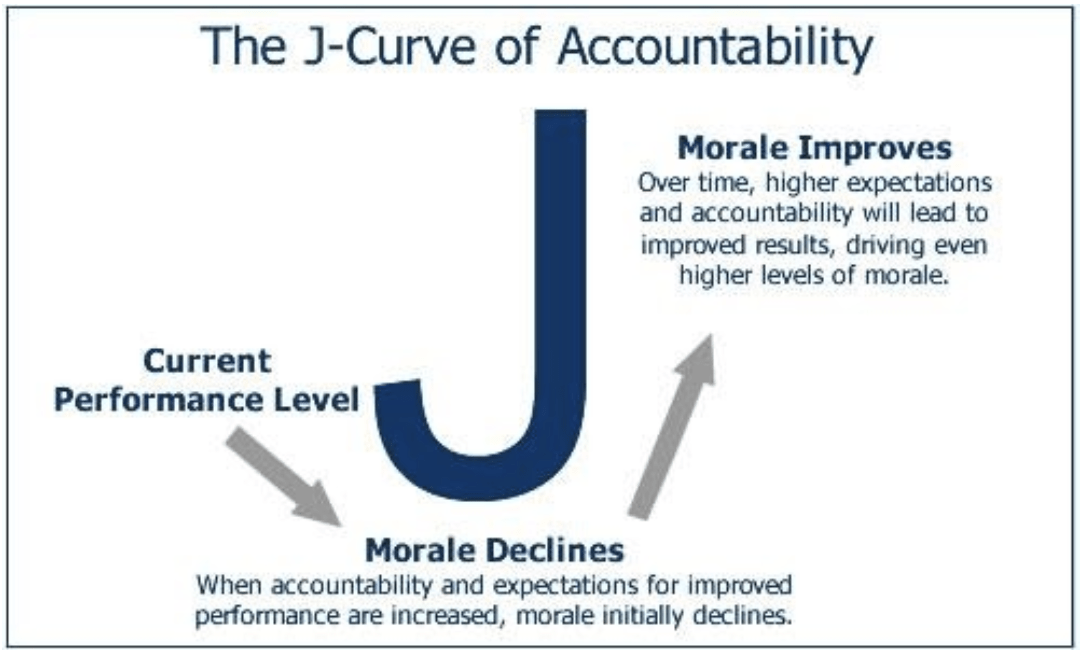Communication, Executive Coaching, Leadership
The Remote Management Accountability Rollercoaster
Have you ever compared being a leader to a roller coaster ride? I think we all have at one point or another. Leadership is hard and at one point, or many points, you will hire or inherit an employee that will test not only your leadership skills, but your patience as well. In today’s world of remote leadership, the task of accountability has gotten a lot harder. For those of us who are used to managing people in person, remote leadership adds a new element. If you had an employee that was good at avoiding accountability when you were all in the same office, remote work has added a level of difficulty. The first thing to understand about accountability is when you start to hold an employee, or group of employees accountable, morale will go down before it goes up. Yes, it will get harder and that is the reason many leaders avoid it. You might be asking yourself right now, why do I want to put myself through this? The reason is simple. When we don’t hold employees accountable, it demotivates our top performers and erode employee’s confidence in your leadership.
To help ensure you have the tools you need to hold your staff accountable, below you will find the J-Curve of Accountability, as well as tips for holding employees to a higher level and in a remote work environment.
J-Curve of Accountability
When you begin to hold employees accountable, it is important to remember that morale may go down before it rises to a higher level. We call this riding the “J” curve of workplace excellence.

When you start on the accountability trail, some employees may become resentful. The employee wants to tell you something like this: “I liked my old boss a lot better. My old boss did not bug me and I didn’t bug her. I would be a whole lot happier if you would just leave me alone.”
When you start to hold employees like this accountable, they, along with every other marginal employee, become disgruntled. Morale declines and starts to move toward the bottom of the “J” curve. The morale and motivation must go down to the starting point on the “J” before it can rise up to the top. This is your clue to hold on, it will get better.
Tips for Holding Employees Accountable
Now that you know what will happen when you don’t hold employees accountable, below are some tips on how to maintain accountability. Remember, your credibility as a leader is contingent on holding all team members accountable for their performance. When you don’t hold all team members accountable, you are often accused of not being fair. This accusation is made because you’re letting some employees slide but holding others accountable.
Over time, your top performers will leave, basing their exit on your lack of accountability for holding employees to the same high standards that they are working towards. But, it is never too late to start holding employees accountable. Below are some tips for how to ensure high levels of accountability:
- Set Clear Expectations: Make sure that employees are clear on expectations for their performance, and how it will be measured.
- Give Feedback: Start early on when you see a performance deficiency. Don’t wait until the end of the performance review cycle, when it’s too late for the employee to correct the problem.
- Follow-up: When you coach an employee, set a date in your calendar to follow-up with the employee. If things are going well, provide recognition. If things are not going well, provide additional coaching, making it clear that your expectation is that the employee will achieve the performance expectations.
- Get Help: If coaching and counseling isn’t working, get your Human Resources professional involved. Follow the advice given and tips for effectively documenting the poor performance.
- Follow Through: Your goal is to help the employee improve performance, but if that does not happen after your coaching, the employee needs to know that you are serious about the consequences. Allowing a staff member to be a slacker or poor-performer, and continue employment erodes morale, particularly of your top performers.
Tips for accountability in a remote environment
Even in this remote environment, it is possible and critical to hold employees accountable. Below is how some of the above tips for holding employees accountable translate to the remote environment:
- Set clear remote expectations. Team members need to be crystal clear about your expectations for the remote working relationship. What are the specific results you need the team member to accomplish and within what timeframe? Also, if the employee is going to take time off during the day, do they need to let you know. Last, what daily or weekly communication is scheduled with you so you can keep up-to-date on the employee’s workload. The key to communication with remote employees is frequency and consistency.
- Focus on results. Do not focus on what people are doing or how they spend their time, since it is almost impossible to do when you are not there with them watching their behaviors. If team members have clear goals, expectations and timeframes for accomplishment, it will be a lot easier to maintain accountability by focusing on results and meeting their goals.
- Trust your team. To be a successful leader of a remote workforce, you need to turn up the volume on your willingness to trust people. With marginal employees, this is also true. They are either going to accomplish the goals or they are not. When they don’t, that is when you step in and have a meeting to discuss about their performance. This time, it will just need to be over a video conference.
Being a great leader in search of the path that leads to workplace excellence is not for the faint of heart. Holding all employees accountable to clearly defined outcomes is hard work. With really difficult employees, it feels like a fight. Yet holding everyone accountable and holding onto the “J” for the entire ride takes you one step closer to creating workplace excellence.











Leave a reply